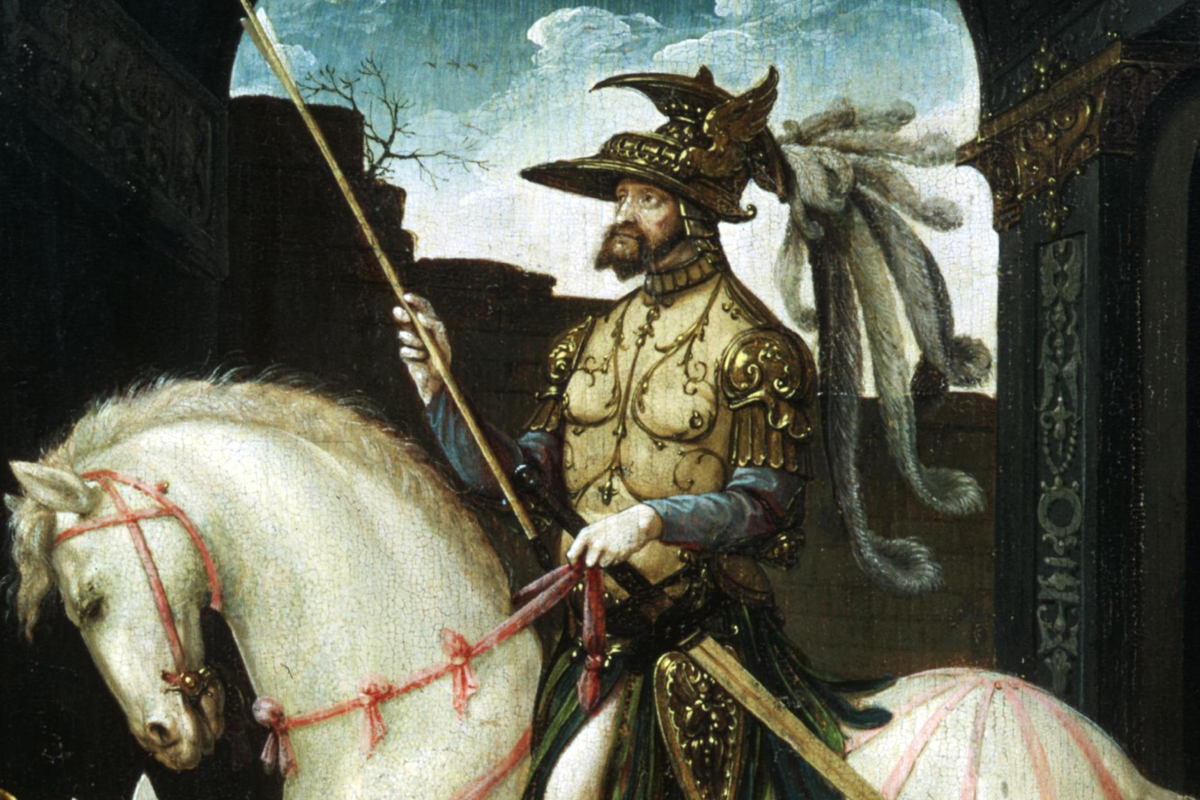Emperor Charles V's code cracked after 500 years

A team of researchers have cracked a five century-old code that reveals a rumoured French plot to kill the Roman emperor and king of Spain Charles V. Charles was one of the most powerful men of the 16th century, presiding over a vast empire that took in much of western Europe and the Americas during a reign of more than 40 years. It took the team from the Loria research lab in eastern France six months to decipher the letter, written in 1547 by the emperor to his ambassador in France. The tumultuous period saw a succession of wars and tensions between Spain and France, ruled at that time by Francis I, the Renaissance ruler who brought Leonardo da Vinci from Italy. The letter languished forgotten for centuries in the collections of the Stanislas library.
Not that long ago, the term Thanksgiving was a fighting word
When Americans across North and South gather for Thanksgiving around tables laden with turkey and cranberries, perhaps the biggest regional disagreement centers on stuffing versus dressing. It was not always so. In the runup to the Civil War, there was strong resistance in the South toward Thanksgiving itself. “With the whole prospect of a showdown over the expansion of slavery, there was more and more rhetoric coming out of the South charging that Thanksgiving was pretty much a Yankee abolitionist holiday,” said James C. Cobb, professor emeritus of history at the University of Georgia. In 1855, Virginia Governor Henry Wise, a slave owner, called Thanksgiving “theatrical national claptrap.”

Merrymount: Thomas Merton's neo-pagan communal experiment
When we think of early New England, we tend to picture stern-faced Puritans and black-hatted Pilgrims, but in the same decade that these more famous settlers arrived, a man called Thomas Morton founded a very different kind of colony — a neo-pagan experiment he named Merrymount. Founded as Mount Wollaston in 1624 near present-day Quincy, Massachusetts, the colony was the brainchild of the Devonshire-born lawyer, raconteur, libertine, rake, and crypto-pagan. Merrymount was a society built upon privileging art and poetry over industriousness and labor, and pursued a policy of intercultural harmony. It was a strange and beautiful alternative dream of what America could have been.

A visit to an echoless chamber, the quiestest place on earth
In a leafy Minneapolis neighborhood under a thick cloak of ivy stands a modest concrete building. Contained within the building is silence exceeding the bounds of human perception. This hush is preserved in a small room, expensively engineered to be echoless. What happens to people inside the windowless steel room is the subject of wild and terrible speculation. Public fascination with the room exploded 10 years ago, with an article on The Daily Mail’s website entitled “The Longest Anyone Can Bear Earth’s Quietest Place is 45 Minutes.” Members of the public became convinced that spending a few hours alone inside it entitled a person to a cash prize of up to $7 million.

Did photography kill the practice of painting portraits?
Illustrators are concerned that artificial intelligence tools, which pump out images in response to text prompts, could impact their industry in much the same way that the invention of photography devastated portrait painting. But photography historian Hans Rooseboom argues that we may be getting that story all wrong. When the first reports about photography came out in 1839, one Dutch periodical warned of “an invention…which could cause some alarm to our Dutch painters. Faithful depictions of nature are made the work of a few minutes.” But this didn't seem to lead to a wholesale rejection of the art of portrait painting – in fact, there's evidence that portrait painting actually experienced a resurgence around the year 1900 or so.

Space Perspective wants to take tourists on balloon rides to the stratosphere
A company called Space Perspective aims to send paying customers and research payloads to the stratosphere aboard Spaceship Neptune, a balloon-borne pressurized capsule that's scheduled to make its first test flights early next year. The Spaceship Neptune capsule can accommodate a pilot and eight passengers, who will ride in style. The craft will feature seats, a bar, a bathroom and huge windows that will allow for great views of Earth against the blackness of space, company representatives said. The craft will launch from the old Shuttle Landing Facility at NASA's Kennedy Space Center (KSC) on Florida's Space Coast.

Mount Etna blowing perfect smoke rings during an eruption
Mount Etna blowing perfect smoke rings during a volcanic eruption.
— Wonder of Science (@wonderofscience) November 23, 2022
Credit: Geoff Mackleypic.twitter.com/qSrDsCUUbN



